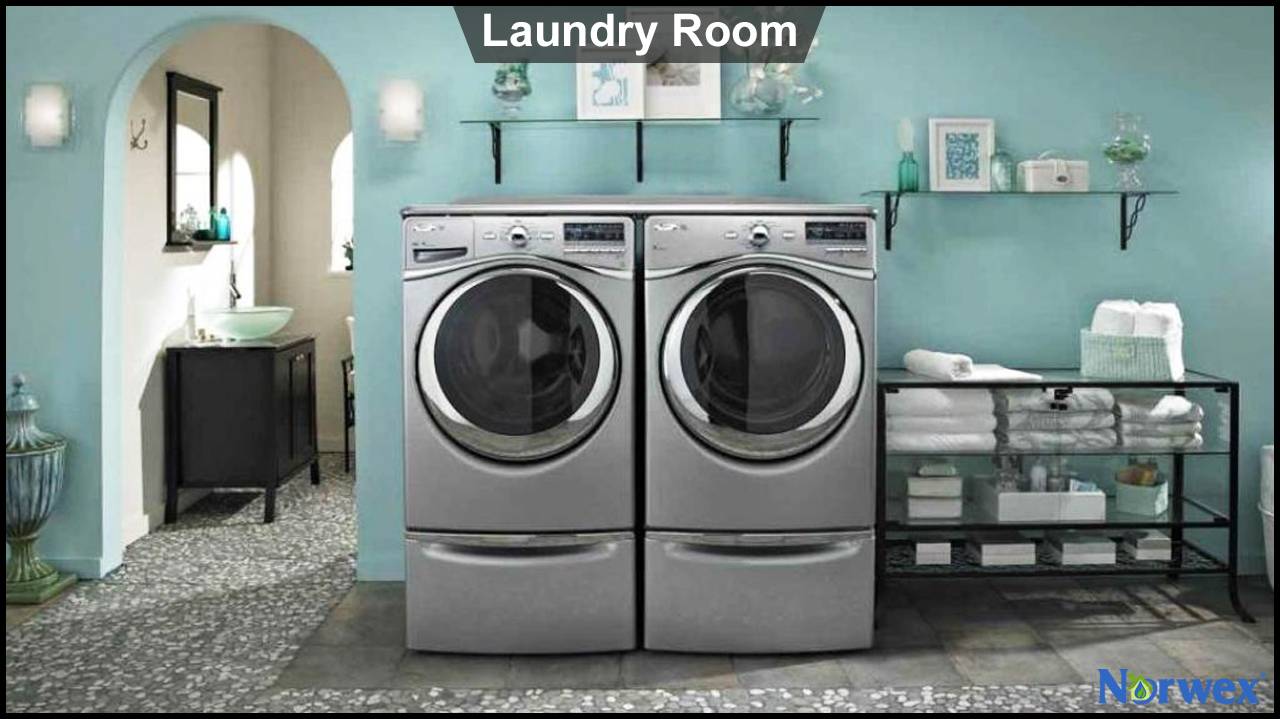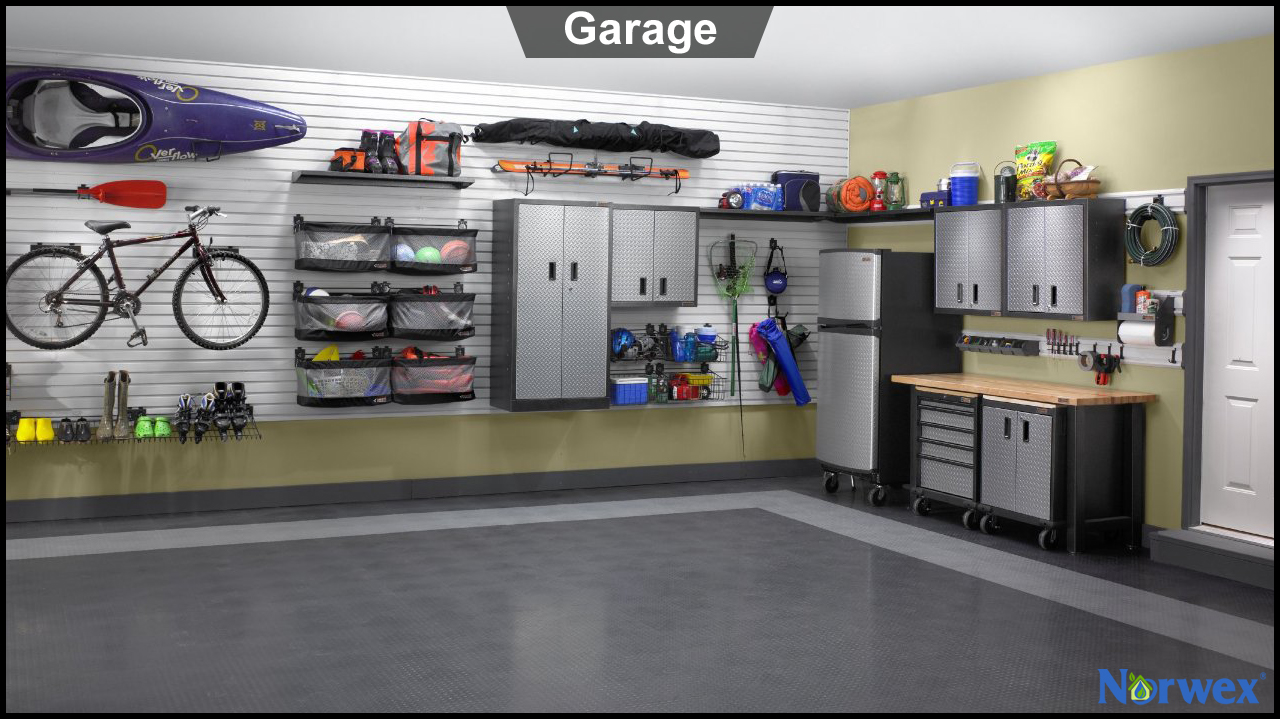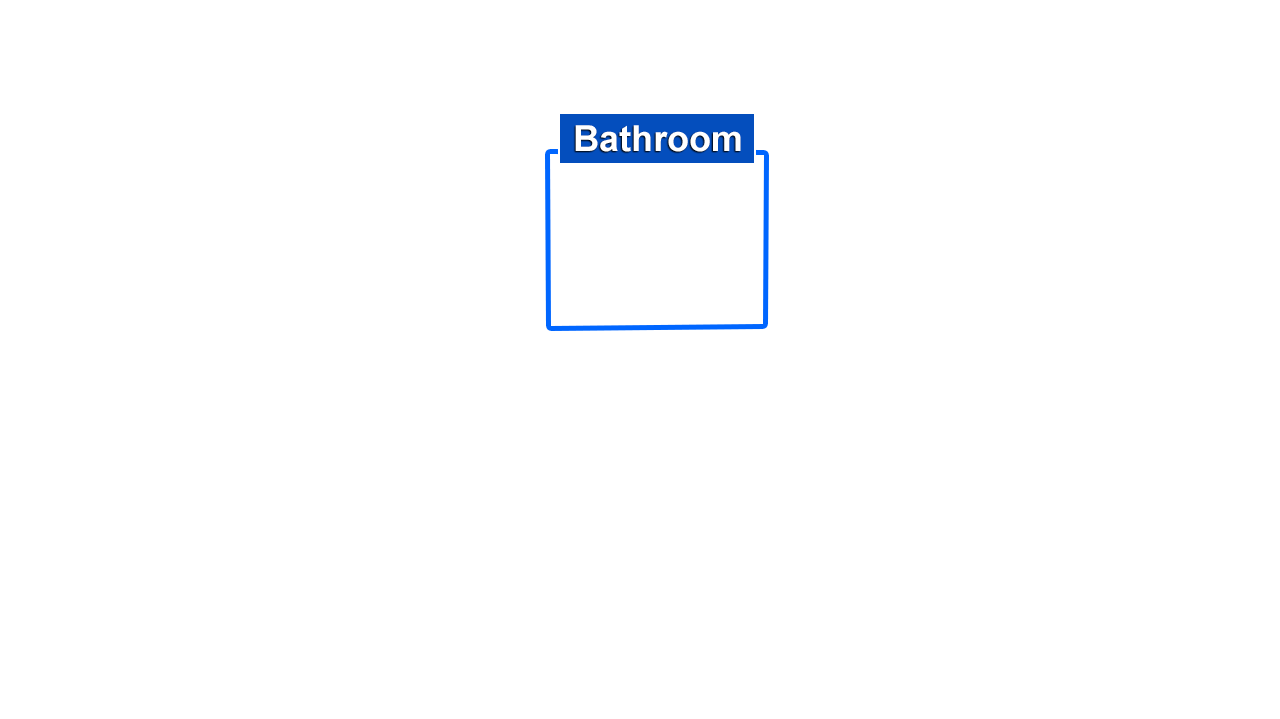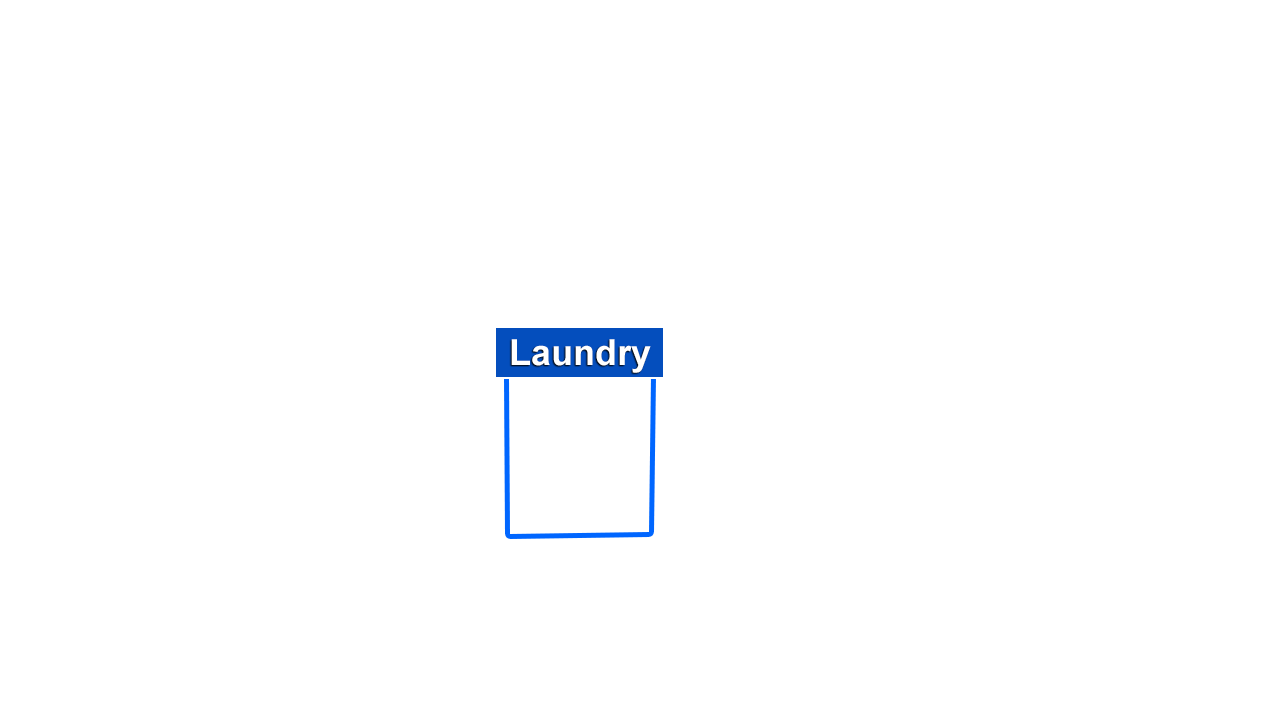Loading Safe Haven House...
Welcome to the
Safe Haven House
 Tip Icon
Tip Icon
Select a room from the menu and click on the tip icons to learn about reducing chemicals in your home.
Problem:
Exposure to asbestos, lead, carbon monoxide or radon could cause harmful respiratory issues including breathing difficulties and lung inflammation.
Solution:
If you live in an older home, make sure to test for things like radon, lead and asbestos, and make sure to add a carbon monoxide detector to help keep your family safe.
More Info:
• EWG: The Rising Cost of Breathing
Problem:
Disposable, pre-moistened wipes can clog sewers and pipes, creating tons of harmful waste. In addition, many contain harmful chemicals that can cause skin allergies.
Solution:
Consider using wipes that are both biodegradable as well as organic, or opt for a reusable, high-quality microfiber cloth and water to help save money.
More Info:
• Green Blog: Wet Wipes - Seeking a Safer Alternative
• Daily Mail: Wet Wipes Destroying America
Problem:
The plastic microbeads contained within certain personal care products are non-biodegradable and harmful to our water systems and marine life.
Solution:
Make sure to avoid personal care products with plastic microbeads and replace them with products that contain natural exfoliants such as ground nuts, oatmeal, or pumice.
More Info:
• Green Blog: Indiana Becomes Third State to Ban Microbeads
Problem:
Many bathroom cleaners contain toxic ingredients like phthalates, triclosan and petroleum-based fragrances that are linked to several health issues including everything from allergies to severe respiratory problems.
Solution:
Try using a bathroom cleaner that contains natural ingredients instead of ones with harsh chemicals such as 2-butoxyethanol and chlorine, which can be hazardous to your health.
More Info:
• Green Blog: Do This NOT That


Problem:
Air fresheners and scented candles may contain hormone-disrupting phthalates as well as dichlorobenzene, a registered pesticide and known carcinogen.
Solution:
Skip the aerosol spray air fresheners, and try opening your windows and using essential oils to keep the air in your home naturally fresh.
More Info:
• Green Blog: Creating Safer Havens
• EWG: Air Fresheners
Problem:
Many bed sheets, blankets and comforters may contain harmful chemicals like formaldehyde, which has been linked to cancer and various respiratory illnesses.
Solution:
Opt for organic sheets and bedding that are also chemical-free, and consider purchasing an allergen-reducing mattress cover or an organic mattress to help keep your family safe from exposure to dangerous chemicals.
More Info:
• Green Blog: Is Organic Cotton Right for You?
• Modern Serenity: Ridding Your Bed of Harmful Chemicals
Problem:
Most paints and finishes emit toxic gases called volatile organic compounds (VOCs) that can linger in your home for months, or even years. These VOCs can cause headaches, put your family in risk of developing asthma or allergies, and have been linked to cancer.
Solution:
Avoid spray painting to prevent inhalation of toxic fumes and particles, and make sure to use paint with low to zero levels of VOCs.
More Info:
• Green Blog: Tips for Creating Safer Havens
Problem:
Household furniture and electronics may contain flame retardants which have been linked to thyroid disruption, reduced fertility and cancer.
Solution:
Avoid toxic foam-padded furniture and opt for solid wood furniture whenever possible. For electronics, look for brands that have committed to phasing out the use of fire retardants in their products.
More Info:
• EWG: Avoid Fire Retardants
Problem:
Dust is a well-known allergen that can also contain toxic chemicals like flame retardants, pesticides and phthalates, a common hormone disruptor.
Solution:
To help prevent dust from accumulating, try dusting more frequently to reduce unsightly buildup and to make cleaning easier. To prevent dust from collecting in those hard-to-reach places, make sure to caulk and seal cracks around your home.
More Info:
• EWG: Revenge of the Toxic Dust Bunnies


Problem:
Every year, we throw away 2.12 billion tons of waste globally. Roughly 99% of what we buy is disposed of within 6 months, which has led to increased pollution and overfilled landfills.
Solution:
Recycle or compost anything you can to reduce waste and save space in already full landfills.
More Info:
• Green Blog: Live Green and Compost
Problem:
Many fruits and vegetables are grown and contaminated with pesticides, which have been linked to obesity, diabetes and cancer.
Solution:
Make sure to purchase organic produce and wash your fruits and veggies before consuming them to avoid ingesting pesticides. To help remove harmful contaminants in your food, try the Norwex Veggie & Fruit Scrub Cloth!
More Info:
• Green Blog: Ten Ways to Make Sure You're Not Eating Chemicals
Problem:
Tap water may contain contaminants like lead and arsenic which, over time, could result in skin problems, high blood pressure, diabetes and various cancers.
Solution:
Try using a faucet or pitcher water filter to help eliminate many of the harmful chemicals that could be in your drinking water. Many water filters can remove contaminants in tap water including chlorine, copper, lead and even arsenic.
More Info:
• Green Blog: Ten Ways to Make Sure You're Not Eating Chemicals
Problem:
Harmful chemicals have been known to leach from plastic food containers, especially when heated. Bisphenol A (BPA) is a common compound found in plastic that has been shown to promote human breast cancer cell growth.
Solution:
Try switching to glass food containers and stainless steel cups for beverages to help prevent your family from ingesting dangerous chemicals.
More Info:
• EWG: Reduce Your Use of Plastics
• Green Blog: One Less Plastic Bottle: Avoiding Plastics
Problem:
Most non-stick cookware is made using PFOAs, a toxic chemical that has been linked to cancer and other health issues.
Solution:
Choose stainless steel, cast iron or enameled pots and pans instead. If you are "stuck" with your non-stick cookware for a bit longer, make sure to never overheat it (use only medium or low heat) and never leave dry or empty cookware on a hot burner or in a hot oven.
More Info:
• Green Blog: Ten Ways to Make Sure You're Not Eating Chemicals
Problem:
Dangerous chemicals like BPA can leach out of plastic food and beverage storage containers, posing serious health risks to our families. What's more, improperly discarded plastic continues to pollute our oceans and choke our waterways.
Solution:
Pitch the plastic and use silicone instead. Extremely versatile and durable, food-grade silicone is heat-resistant and won’t leach. A win for your family as well as the environment!
More Info:
• Green Blog: Benefits of Using Silicone
Problem:
Taking care of your skin isn't easy these days. Harmful UV rays, toxins in the air and other environmental factors can add up to take their toll.
Solution:
Healthy skin starts in the kitchen! Several delicious foods and drinks can help you fight back against skin damage from within.
More Info:
• Green Blog: 5 Foods That Can Help Keep Your Skin Healthy


Problem:
Washing machines can waste a great deal of water and energy while in use.
Solution:
To save water and energy, wash full loads only and try to use cold water whenever possible.
More Info:
• Green Blog: 9 Tips to Help You Save Energy While Washing Clothes
Problem:
Scented laundry products may contain fragrances with dozens of toxic chemicals like phthalates, a known hormone disruptor.
Solution:
Try using lavender and essential oils as a substitute to help your laundry smell fresher. Also, avoid using dryer sheets and instead try Norwex Dryer Balls as a safer alternative.
More Info:
• Green Blog: Creating a Safer Haven for Kids
Problem:
Clothes dryers consume a lot of energy.
Solution:
Clean out your lint filter and dryer vent regularly to help clothes dry faster, and consider air-drying clothes on clotheslines or drying racks to help save energy.
More Info:
• Green Blog: Tips to Help You Save Energy Washing Clothes
Problem:
Did you know? Washing your laundry accounts for about 12% of your monthly water needs. With water resources becoming more scarce, it's important to conserve our water resources however we can.
Solution:
Running your washer and dishwasher only when they're full can help you save thousands of gallons of water every year.
More Info:
• Green Blog: Indoor Water Conservation


Problem:
Many air fresheners contain harmful chemicals that trick your nose by masking odors. They may also contain phthalates, which are known endocrine disruptors.
Solution:
Sunlight and some baking soda, sprinkled and vacuumed, can work wonders to freshen most odors. Norwex Odour Eliminator is also a great way to freshen the air naturally.
More Info:
• Green Blog: Creating Safer Havens
Problem:
The air in your home may contain asbestos, dust, pollen and airborne viruses which can contribute to the development of asthma, infections, and even cancer.
Solution:
Try using plants to filter the air to help you get rid of unpleasant odors and improve the indoor air quality of your home.
More Info:
• Green Blog: Creating Safer Haven Tips
• American Lung Association: Healthy Air Indoors
Problem:
The soles of your shoes carry bacteria and other undesirable things into your home and onto your floor, which can then be transferred to your children and pets.
Solution:
Make sure to take your shoes off when you come in the door and use a floor mat to help mitigate the amount of bacteria and other contaminants you bring into your house.
More Info:
• Green Blog: Shoe-Free Home Benefits
Problem:
Your carpets may contain dust, which can aggravate allergies and can trap pollutants like pet dander, cockroach allergens, lead, mold spores and pesticides, all of which can cause serious health issues.
Solution:
For cleaner floors, opt for a vacuum with a HEPA filter and try to vacuum at least twice a week.
More Info:
• American Lung Association: Carpets
• Green Blog: 20 Tips for Creating Safer Havens
Problem:
Keeping your home warm in the winter and cool in the summer can be impact your budget as well as the environment.
Solution:
Use a programmable thermostat and seal off drafts to help ensure you're not wasting natural resources or spending more than necessary to stay comfortable.
More Info:
• Green Blog: 21 Tips for Staying Snug This Winter
• Green Blog: 4 Eco-Friendly Ways to Keep Your Home Cool This Summer
• Green Blog: Energy Conservation


Problem:
Did you know that your vehicle can consume roughly the same amount of energy as your home?
Solution:
Reduce fuel and repair costs by performing regularly scheduled car maintenance. Make sure your vehicle is as fuel-efficient as possible by having it tuned-up regularly and inflating your tires to the recommended levels.
More Info:
• Green Blog: Energy Conservation On the Road
• National Wildlife Federation: Conserving Energy On the Road
Problem:
You want to rid your home of toxic chemicals, but aren't sure what to do with them. You definitely don't want to risk polluting waterways, streams and lakes by pouring them down the drain or dumping them outside.
Solution:
When it comes to safely disposing of products containing harmful chemicals, you have options. Check Earth911.com or call your city or county services.
More Info:
• Green Blog: Chemical-Free Summer - 1,2,3 CFZ
• Earth911: Recycle Center Guide
Problem:
With items like pesticides, motor oil and antifreeze commonly stored in the garage, harmful chemicals can easily be tracked inside your home via the garage entryway.
Solution:
Be aware of any chemicals stored in your garage and consider placing a high-quality entry mat near the entrance to your home.
More Info:
• Green Blog: Benefits of a Shoe-Free Home
• They're Everywhere: Endocrine Disrupting Chemicals
• Green Blog: Road Salt Use Harmful to Waterways and Aquatic life
Problem:
Using and storing chemical-based pesticides in or around your home could be dangerous.
Solution:
Try safer, more earth-friendly natural pesticides and other options to rid your home, lawn and garden of pests.
More Info:
• Green Blog: Home Pest Natural Deterrents
• Green Blog: Chemical-Free Pest Control
• Green Blog: Chemical-Free Weeds











